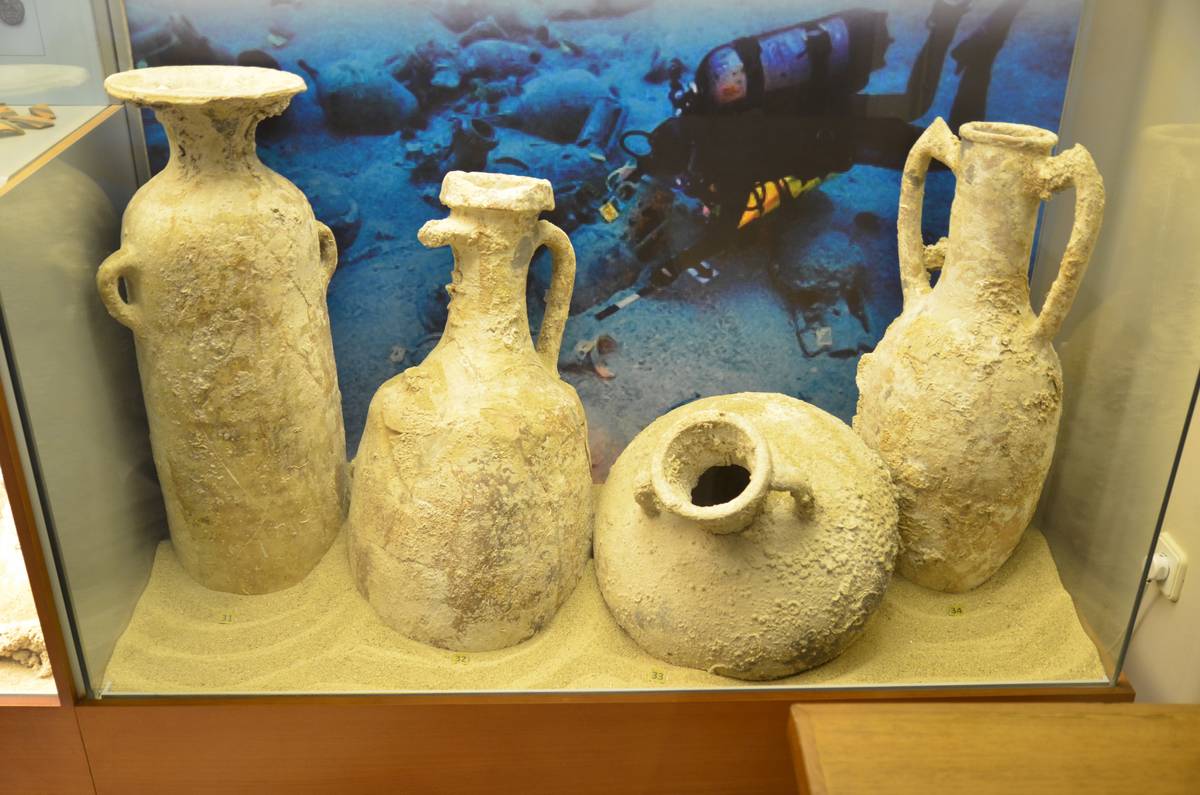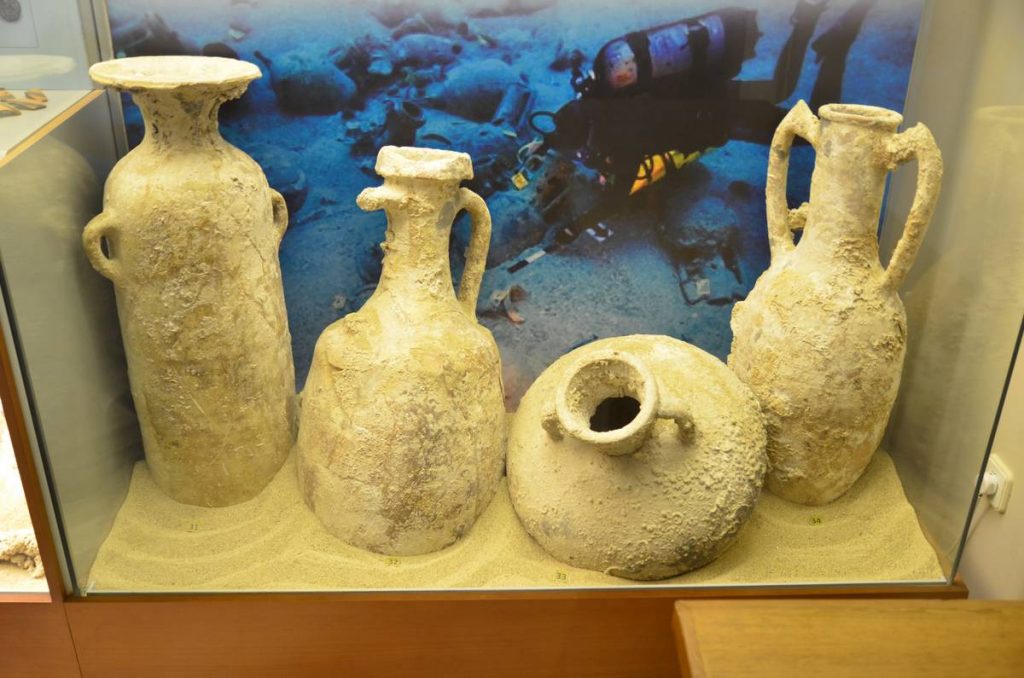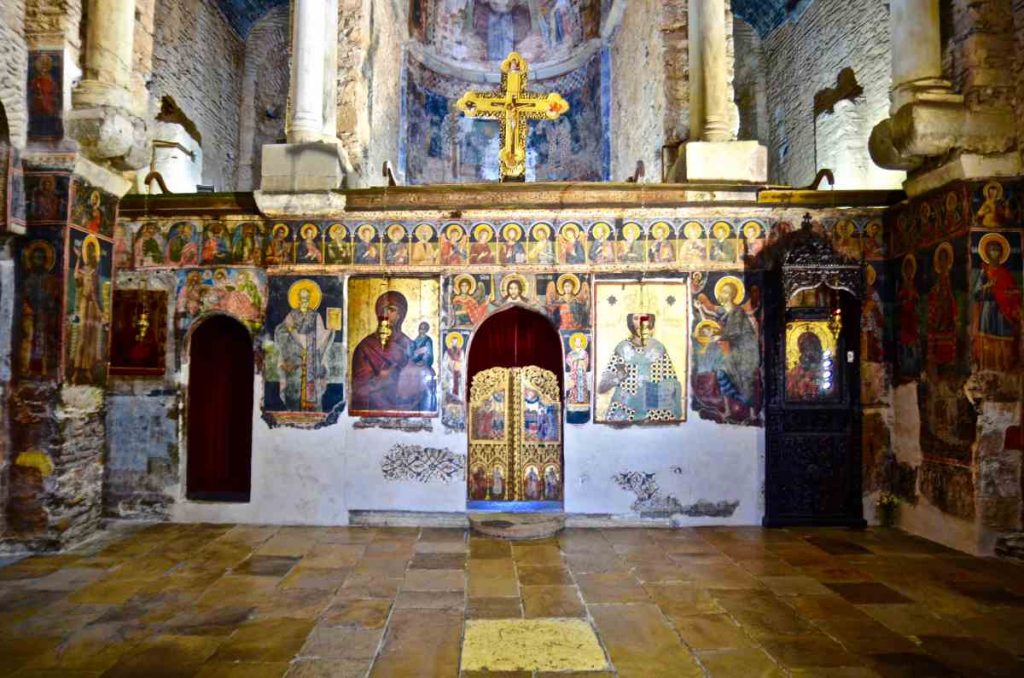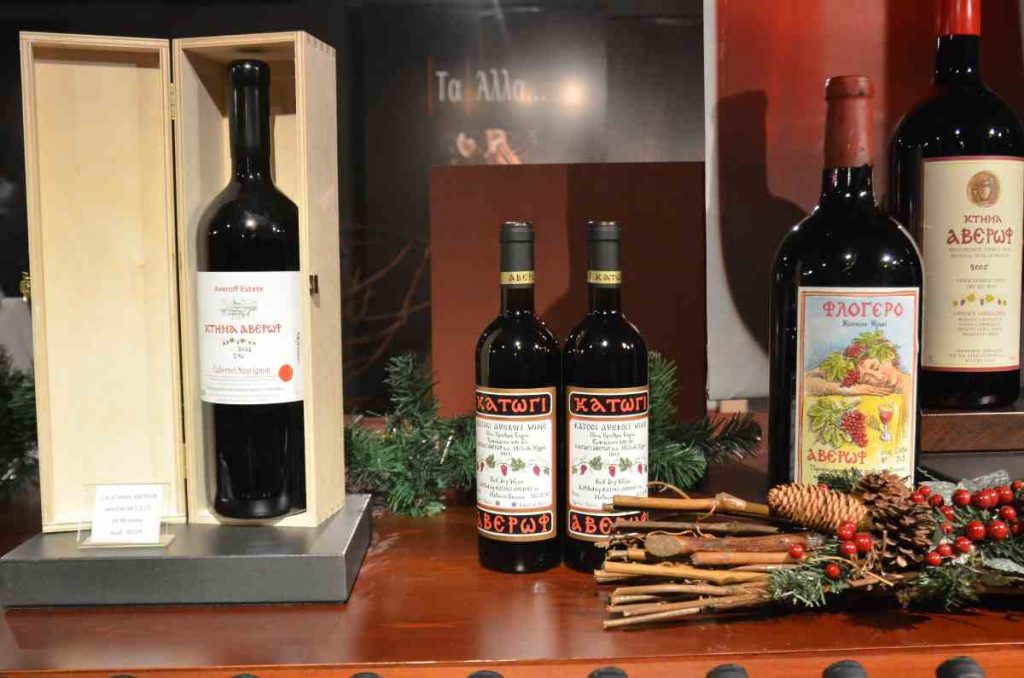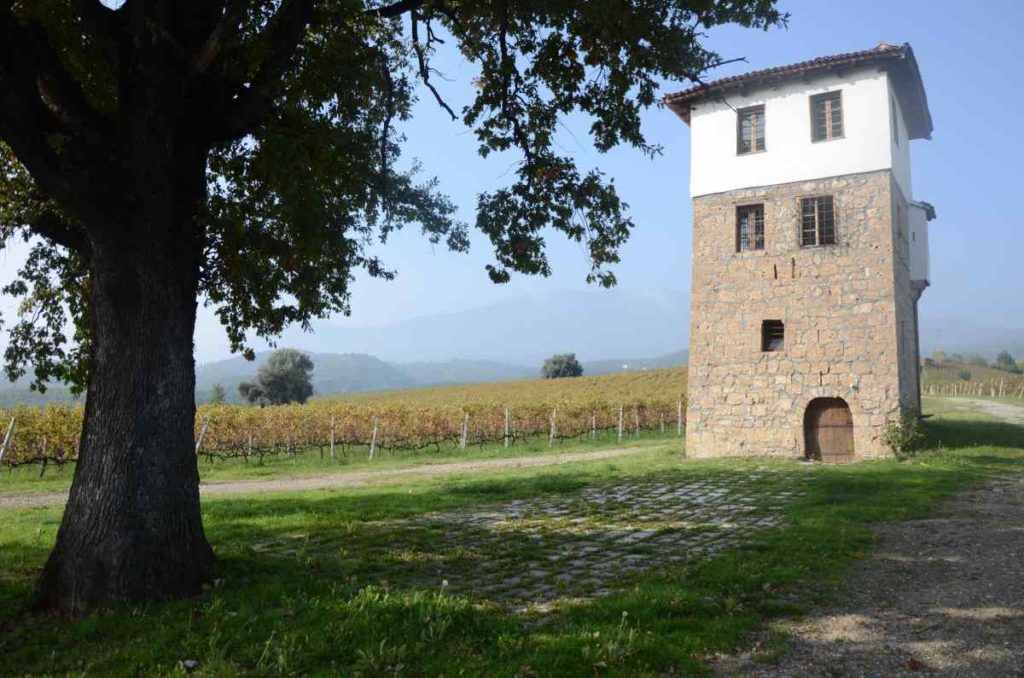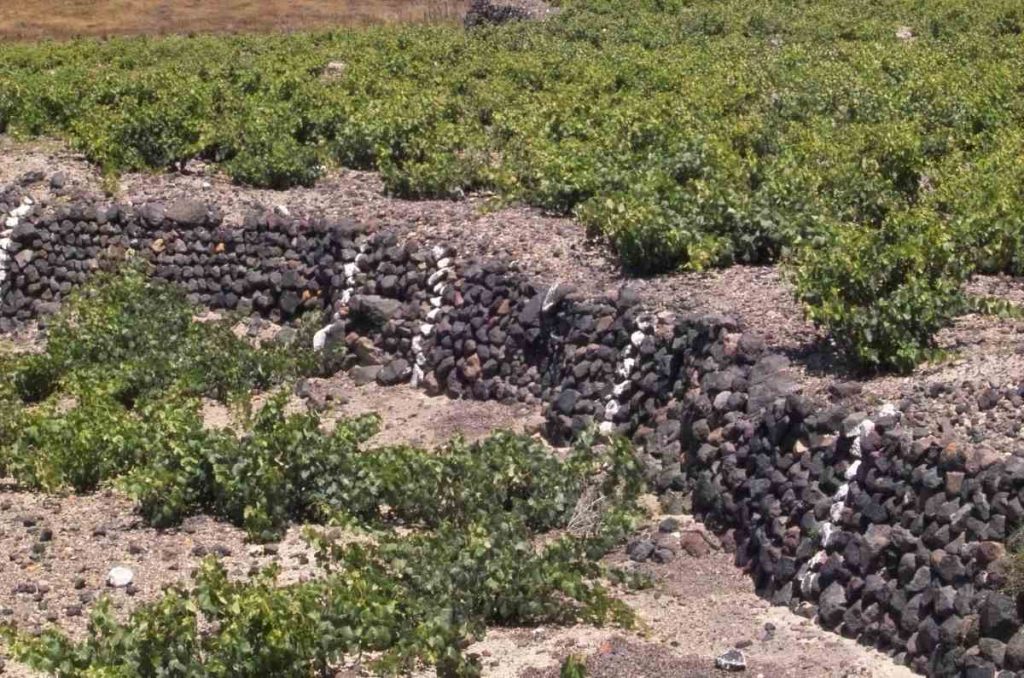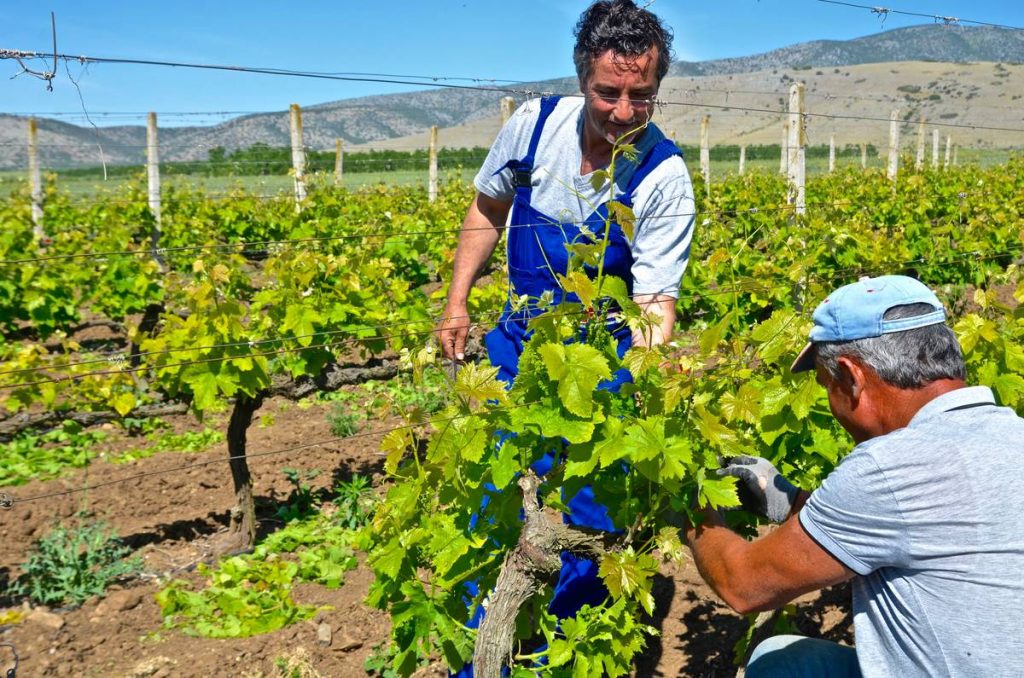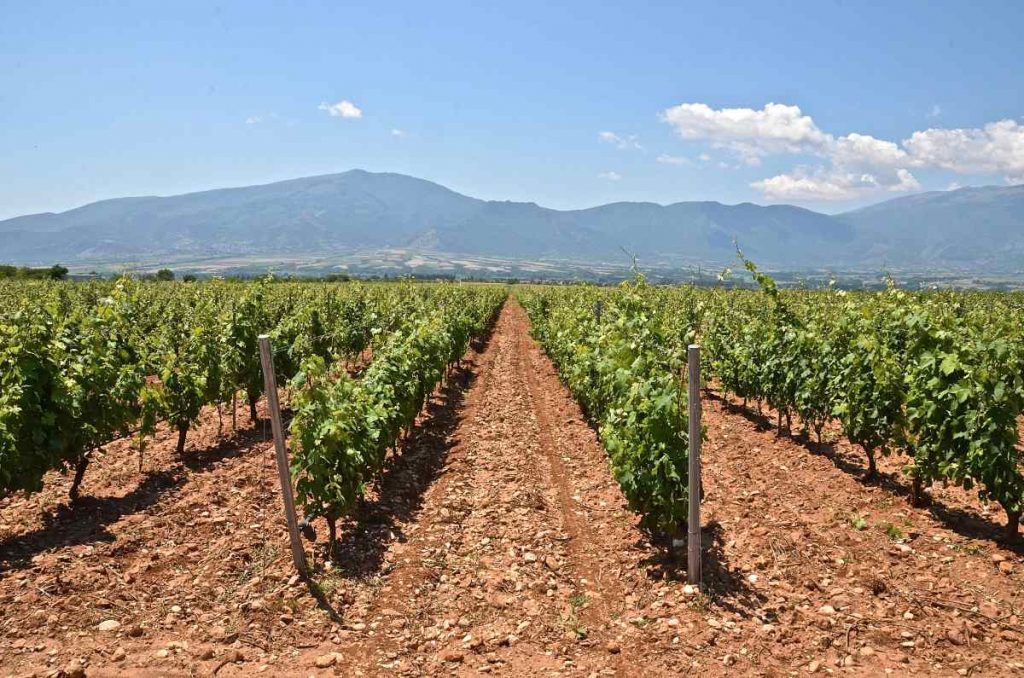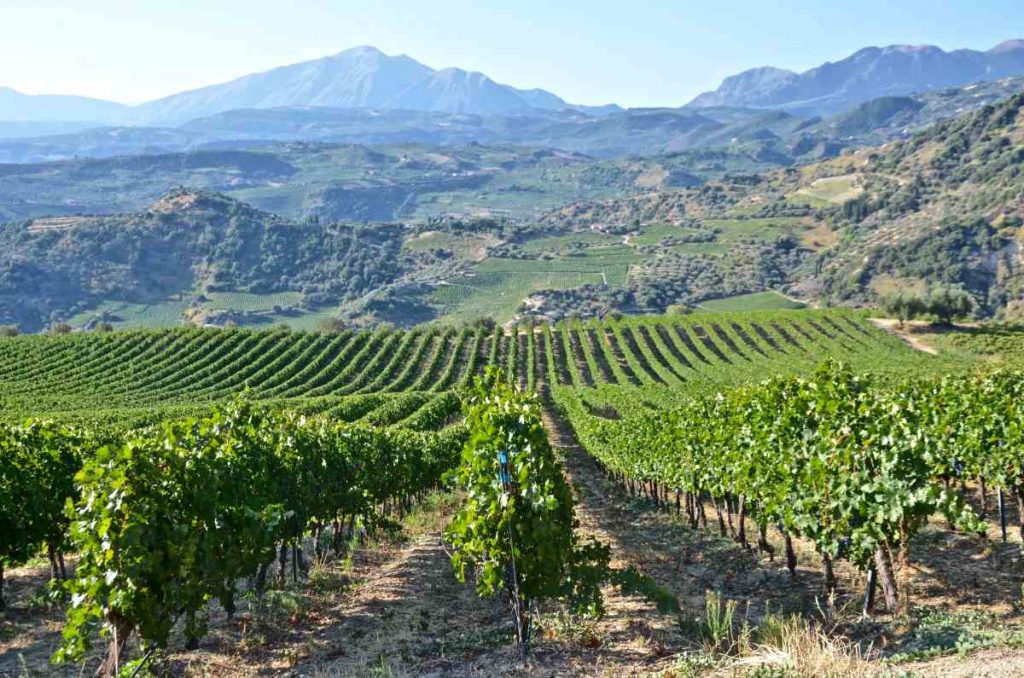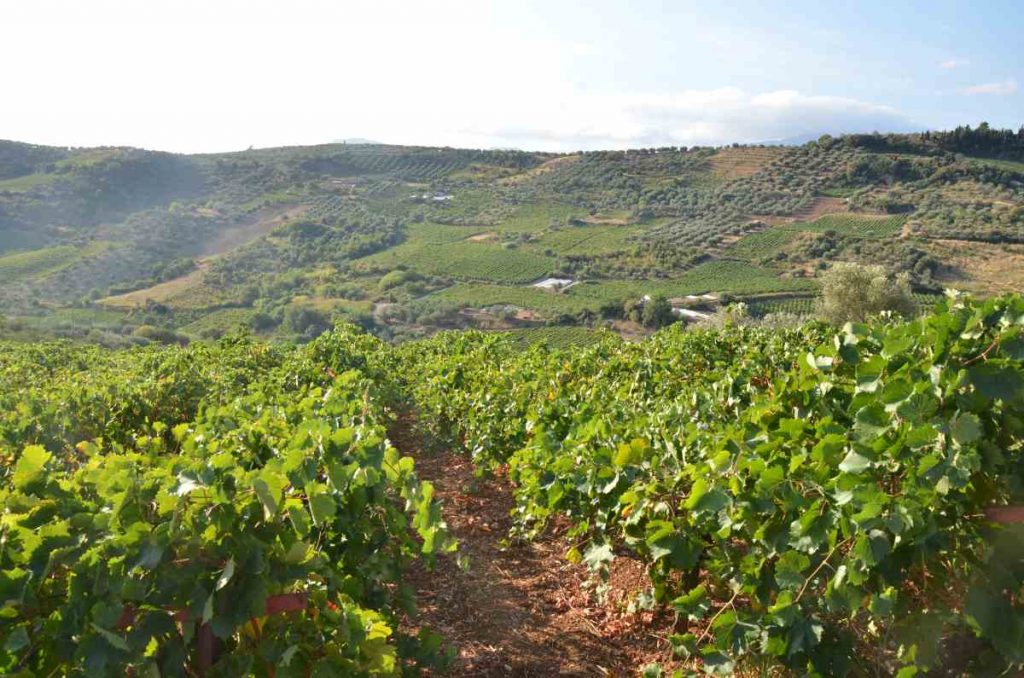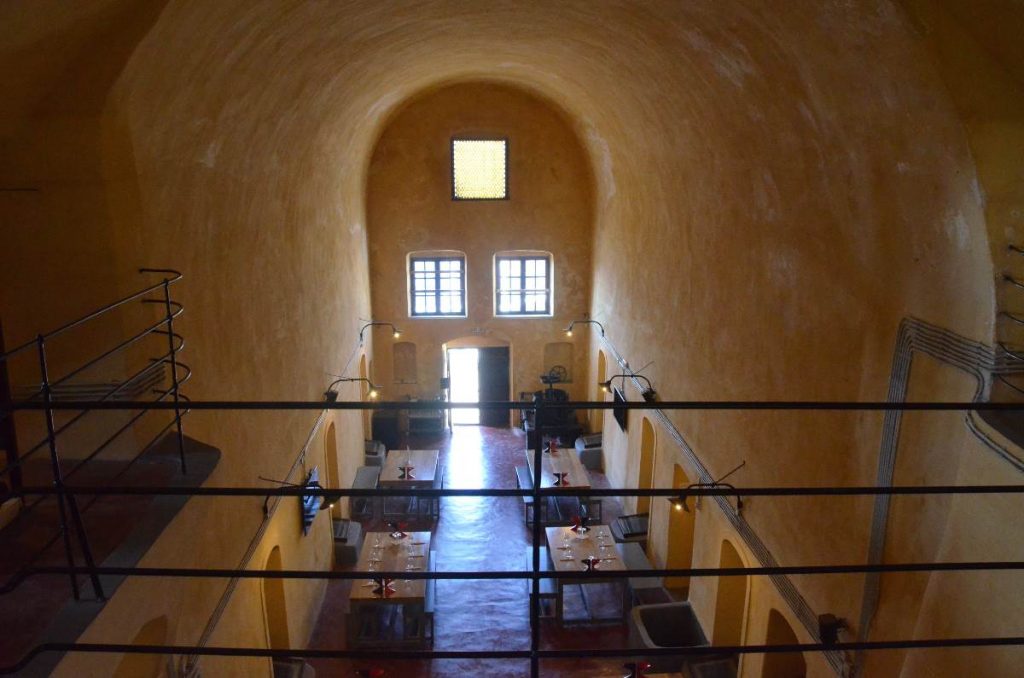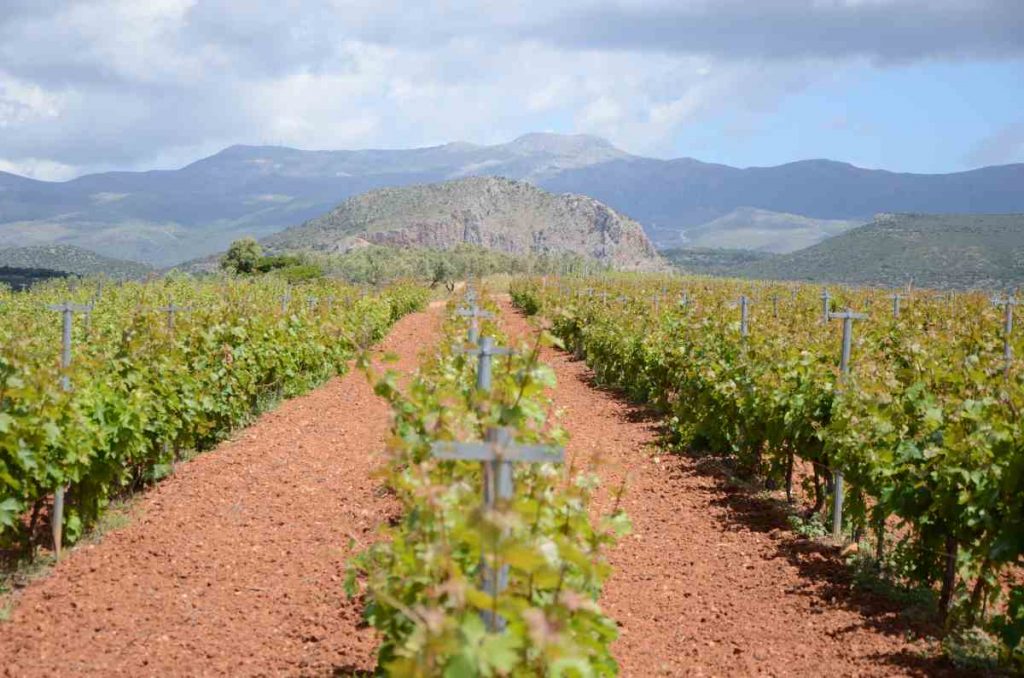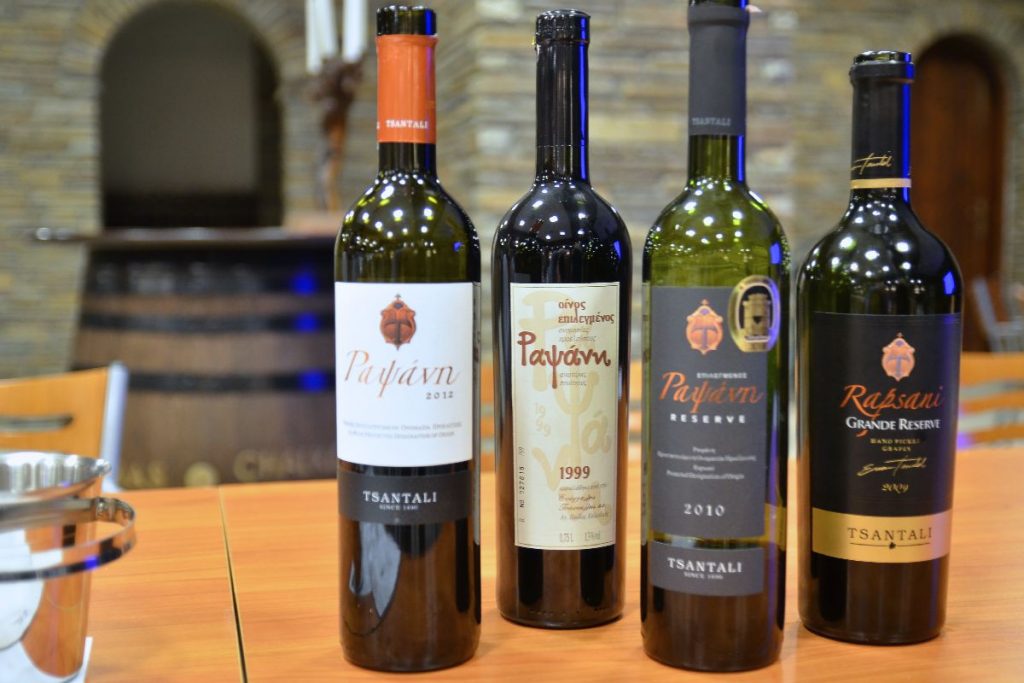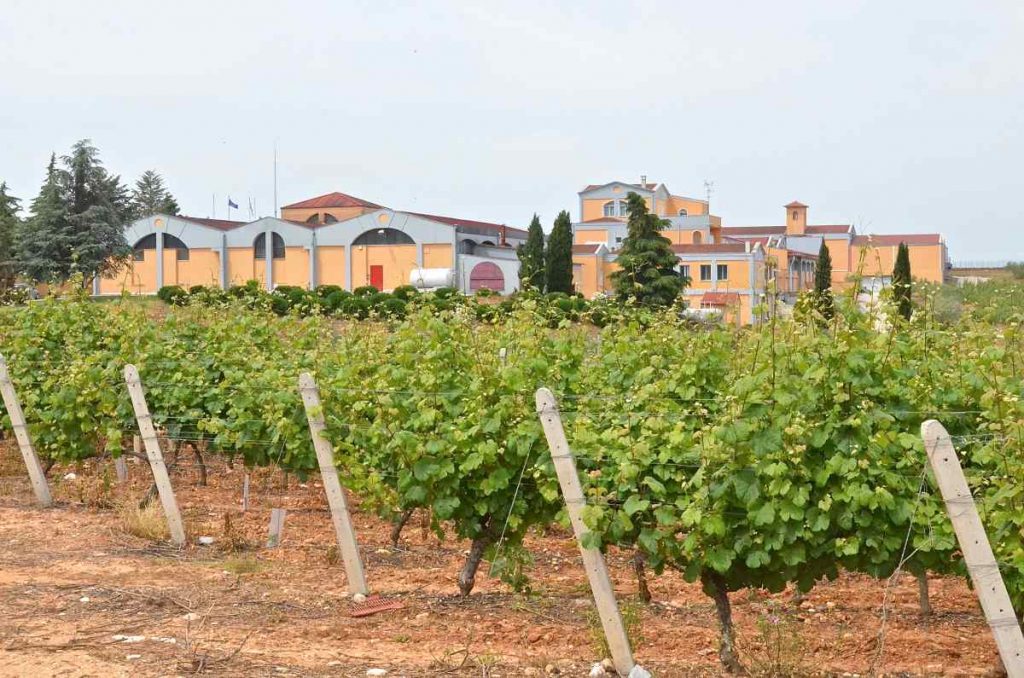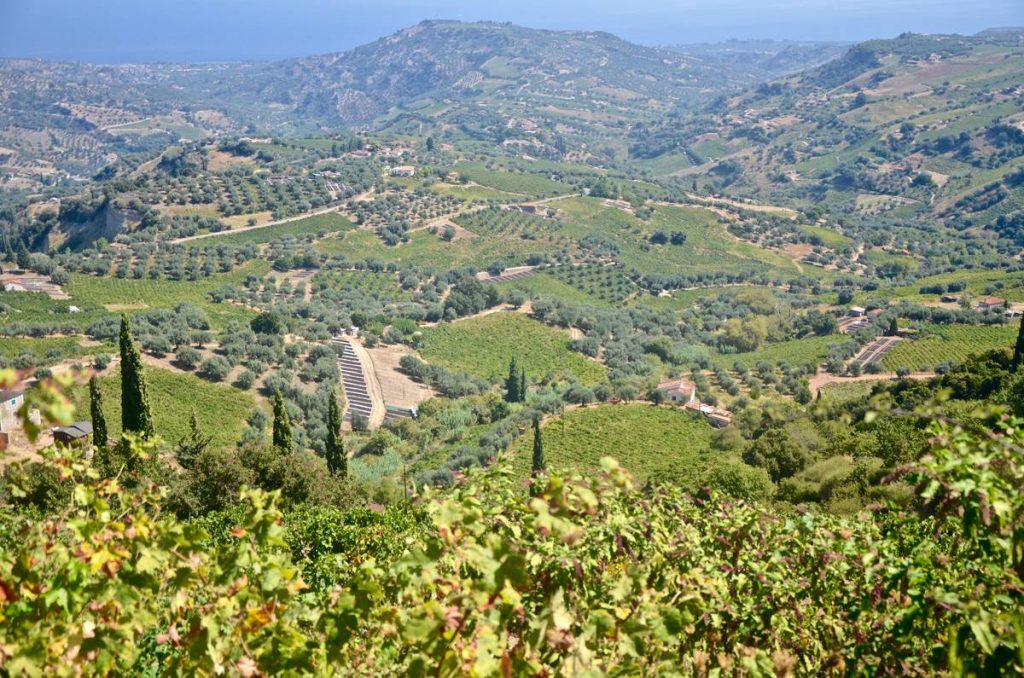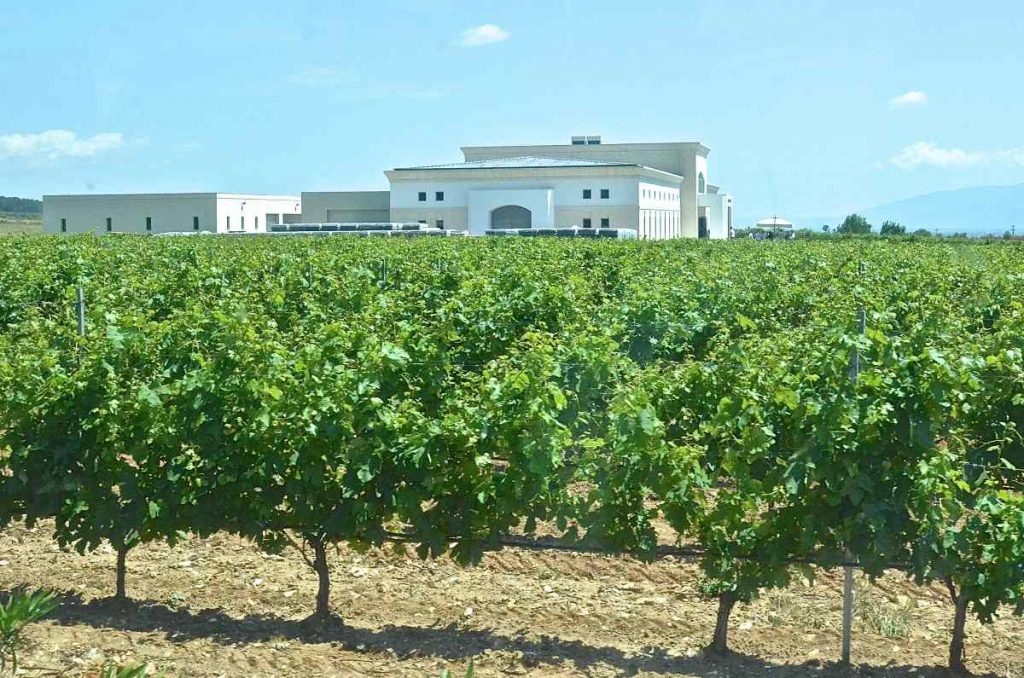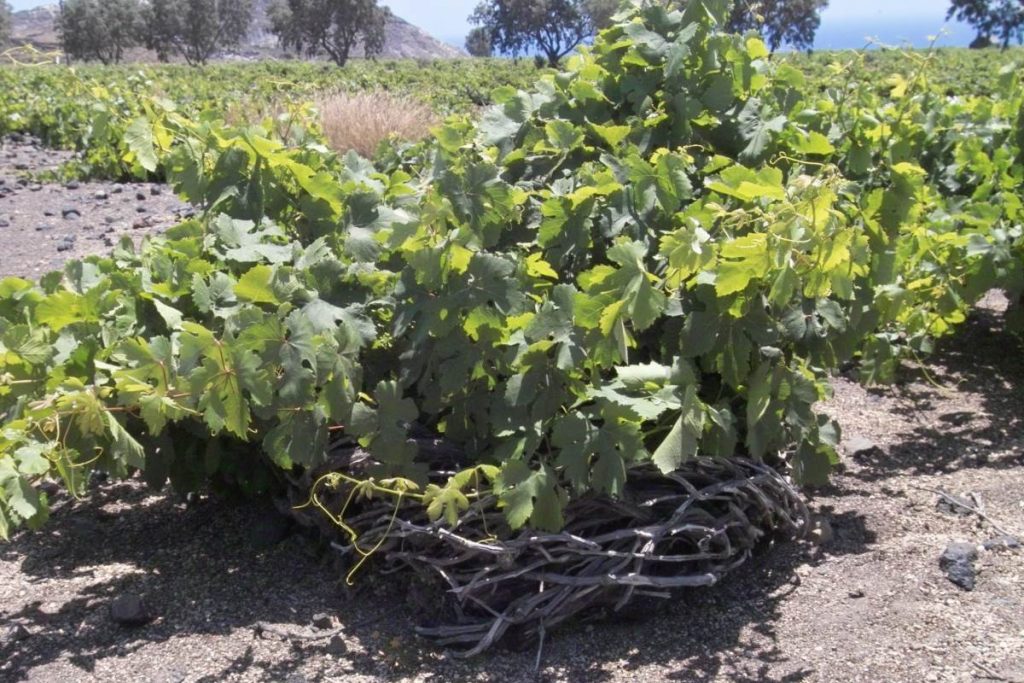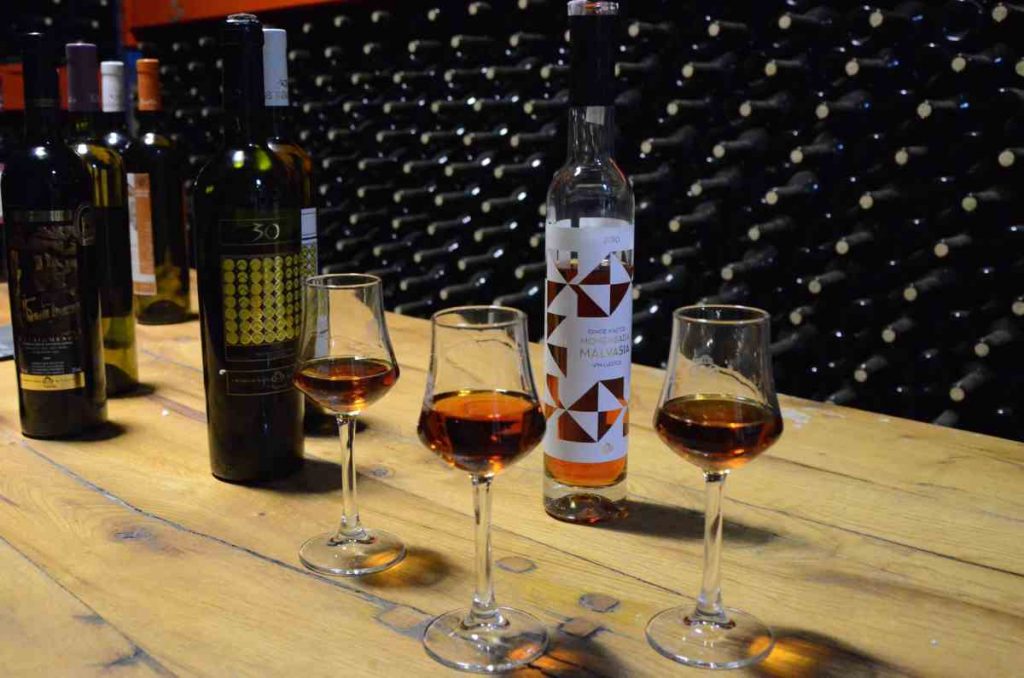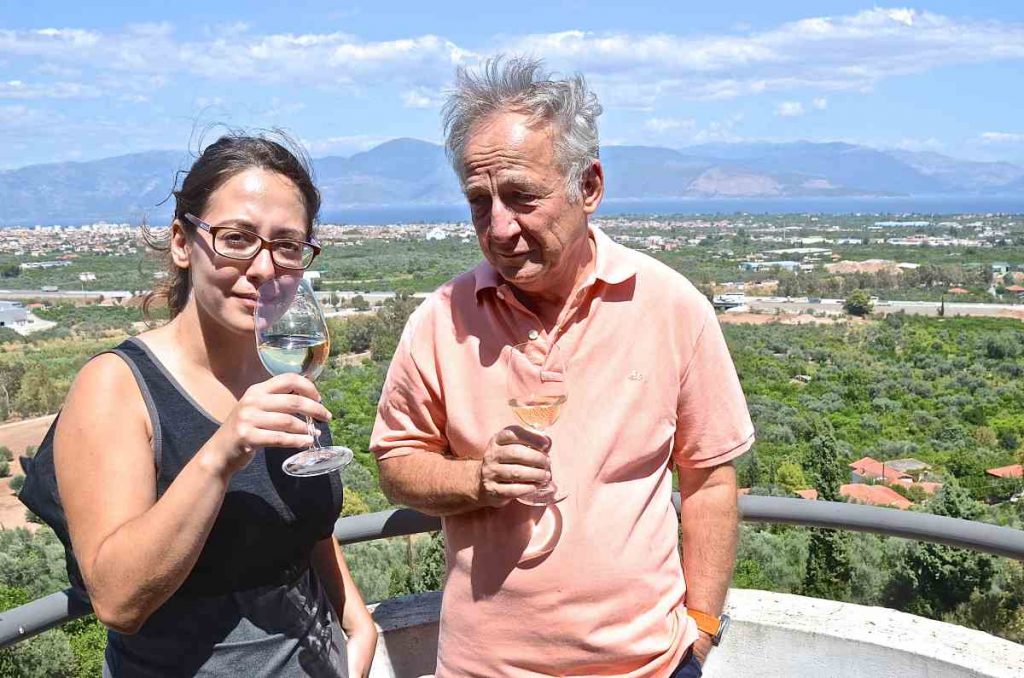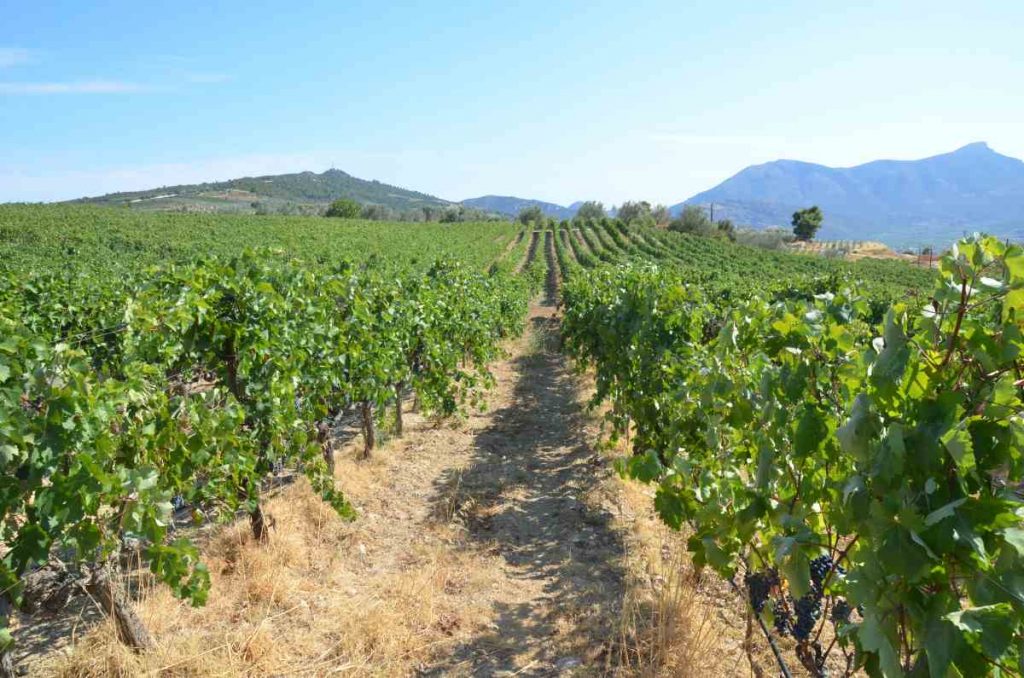The vineyard and the wine, are the blessed gifts that Nature gave to man, and he in turn turned them from food in joy, hope, revolution, spirit and God.
Tribute of the Greek Gastronomy Guide to wine
- Introduction
- Wine in the Bible
- The history of wine in Ancient Greece
- The vine of Christianity and wine in the Christian tradition
- Wine in Byzantium
- Wine in the later years of Byzantium
- Wine during the Ottoman Empire
- Wine and Monastic diet
- The wine on the 20thο century
- Strategic wine export plan
- From the vineyard to the glass
- Greek wine production - Greek vineyards
- The largest Greek wineries based on sales
- Wine varieties of Greece - PDO wines
- Interview with George Skouras, President of SEO
Introduction
A component of the Mediterranean trilogy "Wheat, olive and vine" - according to the historian of this closed sea Fernand Brodel - Vineyard and Wine are the blessed gifts that Nature gave to man, and he in turn turned them into joy, hope, revolution, spirit and God.
Although wine was deified, throughout its course from Antiquity, Christianity to the present day, it has always been accompanied by opposite qualities and ambiguous values. The main ingredient in the festivities of everyday life, with a decisive presence in the philosophical discussions of the banquets, but also a stimulating transformer of passions and Dionysian debridements, the Wine moves between two poles:
Between spirit and passion, logic and emotion. That is Apollo and Dionysus.
And between these two, the Greek measure, finding balance and boundaries.
And if toxicology through its standard terminology refers to intoxication as an "acute alcohol poisoning", this intoxication is what the people glorified and the gods blessed.
Thus, wine, from food became the cultural stimulant of the Mediterranean, moved between Heaven and Hell.
And we rejoice that nowadays wine continues to play the role it has always played, to create the intoxication of creation, of joy and the end of transcendence, that is, of the deliverer from contracts, who defies reality, who acquaints us with bloody temporary revolutions and that helps us concisely with small overdoses to get rid of the madness of everyday life.
Wine in the Bible
The vine in the Bible is most often identified with the Jewish people and the first viticulturist is Noah who plants a vine after the flood. At the Exodus of the Jews God promises to bless the bread, the wine and the water, necessary for the life of men.
David often praises the product of the vine, "wine makes the heart of man rejoice," or "rejoicing in my heart from wheat, wine, and oil." He considers wine a basic good for man, who pleases his heart, that is, the center of all his emotions.
The history of Wine in Ancient Greece
Traces of vineyard and wine are lost in the depths of prehistoric times. Homer, in his epics, he characterizes many areas with adjectives that testify to the tradition of vinification, while in the ninth rhapsody of Iliad ο Nestor reminds him of Agamemnon that their cellars are full of wine that was transported daily from Thrace by the ships of the Achaeans crossing the sea.
In Crete, in the 17th century BC, the vineyard, brought by the palm traders, was systematically cultivated, while in Archanes the oldest wine press in the world was found.
The ancient Greeks considered wine an integral part of their lives, which is why they worship Dionysus, the god of wine, feasting and theater. This earthly god, with his contradictions and outbursts, we will see in several depictions in a multitude of vases holding a bunch of grapes in one hand and a cup of wine in the other, while satyrs have danced around him in a state of ecstasy. Seilinoi and Maenades.
In banquets the wine flowed abundantly facilitating communication between the attendees and creating an atmosphere conducive to the development of philosophical discussions. The water with which they diluted the wine delayed the intoxication by ensuring the sobriety of the mood and the energy of the spirit throughout the banquet, which lasted many hours, many times and days.
In antiquity, many people deal with wine and excel in its virtues, while the philosopher Theophrastus from Lesvos describes the techniques of pruning, watering and sprinkling, reducing viticulture to science. Wine, in addition to pleasing the senses, was particularly useful in medicine, but also necessary for the weights of the gods.

Marble slab that concerns the rules of marketing and cultivation of wine like the current laws for PDO wines. and P.G.E.
The enormous economic importance of wine has resulted in its legislative protection. In fact, in ancient Greece, its meaning was invented for the first time Designation of Origin of wine. Thus we see in texts that the Xios wine, Lesbian wine, Thassios wine, Pramnios wine (from Ikaria). Amphorae from Chios, Thassos, Samos and Rhodes were found in shipwrecks discovered in the Mediterranean Sea, but also in the Black Sea and India, findings that testify to the large trade of wines originating from Greece. Each city-state even had its own amphora shape for its wine, with a special stamp that certified the area that produced it. The shape of the amphorae was such that it allowed them to be wedged and lined up in the hold of the ships, so as to ensure the safe transport of the wine in the largest possible quantity.
Closing the period of Greek antiquity, we could say that wine played many roles: replaced them sacrifices of animals and humans ("god is wine, and the gods are offered a weight to secure goods to humans", Euripides), expelled them sadness ("Lucky whoever rejoices full of joy from the sweet and coveted fruit of the grape that banishes sorrow from the afflicted and throws into the forgetfulness the bitterness of the day", again Euripides), was the favorite breakfast, a bread or nut soaked in wine, wine that has not been diluted to retain all its nutrients (a habit that has been maintained for centuries, until the end of the 20th century, in rural societies) and, finally, at banquets, diluted with water one to three, helped to entertain and develop philosophical discussions. However, in addition to this prudent use of Wine, in antiquity there was another dimension. Because if from the Homeric epics to the classical Athens of Plato, food and drink were subordinated to subway and every citizen had to prove his good manners everywhere, the same did not happen in the feasts of Dionysus. The Dionysians were popular holidays in the countryside, (in the spring) where drunkenness played a role of cultic behavior and the Dionysians were nothing more than breaking the rules and reversing values and meanings.
Dionysus is worshiped as the God of wine, of ecstasy, insanity, dark outbursts and dark brakes. Far from the strict standard of other holidays, and away from the city and its rules, the Dionysians freed from all worries. The festivities were real breaks of joy, laughter and freedom and reached the point of innocence. People were celebrating the release from the shackles of daily bonds.
And although the Dionysians temporarily overthrew the dominant morals, the Polis considered it necessary to finance these holidays, which gave so much joy and liberation to its citizens. And of course, here Polis did not take into account Plato, this fierce opponent of the "barbarism" of the Dionysian festivals, who as a supporter of moderation, harmony, monarch of the mind and creator of the world of ideas, could not tolerate human passions and weaknesses, transcendence of moderation and harmony.
The vine of Christianity and wine in the Christian tradition
In the Gospels the vine symbolizes life, joy, Christ. The words wine and vine are mentioned more than 250 times in the Bible. The Christian religion from its first steps embraced wine as a blessed good. This connection is logical, as Christianity spread and grew in areas where the Greco-Roman civilization flourished, where wine, in addition to being a basic food, was completely associated with the worship of Dionysus.
Christ begins the miracles by turning water into wine at the wedding in Cana, where he then teaches his disciples to better understand the relationship between them and likens himself to a vine: "I am the vine, we are the vines."
But wine acquires its sacred significance in the Last Supper, when Christ gives the disciples the cup, saying, "Drink of it, all of you, for this is my blood of the new testament, which is shed for many for the remission of sins."
Then, for Christianity, wine and bread are the two basic gifts that are offered to God to sanctify them and change them into Body and Blood and which we will share.
In the following centuries the followers of the work of the Apostles, the fathers and the teachers of the church, also emphasize the same things. They do not deter the faithful from the rational use of wine, but they fight with whole speeches (Against drunkards) to protect them from the harmful consequences of excessive consumption and intoxication.
Wine in Byzantium
Wine remained a daily companion of the Greeks after antiquity and in later historical periods, as in Hellenistic and Roman times.
For the Byzantine world, "the vine and the wine" are the top sacred symbols of Christianity: "Drink from it all, this is my blood for many shedding the remission of sins". However, the conflict between the Christian religion and the Greek Twelve Gods and the cult of Dionysus was relentless.
Despite all the condemnation from the Ecumenical Councils, defying the rules of the Christian Orthodox Church, which recognized only one vine and one wine, despite its official defeat, Dionysus continued to entertain ordinary people, but also his Christian followers. the monks, the Hellenizing scholars and the emperors, in the chapels, the inns, in the palaces and the popular festivals and in the festivals.
The word wine began to appear gradually from the 6th AD and prevailed over Wine, because wine was a taboo word for Christianity, a word that should not be used for everyday use.
The Synod of Troullos (691 AD) forbids the invocation of the name of Dionysus when pressing the grapes and transferring the wine to the jars.
Thus, at some point in the Greeks, the Dionysian cult remained a "forbidden" memory, which erupted on feasts such as that of St. Tryphon, patron saint of winegrowers in Greece or on the feasts of the resurrection of the relics of St. George the Drunkard on November 3, with the opening of the barrels, where the people got drunk celebrating.
And of course, let us not forget the great compromise of the church, which, not being able to completely prevent Dionysian worship, incorporated it (in its own terms) in the religious festivals of the Saints in the festivals that took place in the countryside, allowing them to include song, dance and wine tasting.
For the most part, the feasts of the Dionysians, with the masks, the overthrow of the regime, turned into the Christian Halloween.
Wine in the later years of Byzantium
11ο century, at least from a philological point of view, the lifting of the "Dionysian prohibition" imposed in 7ο century. From this period Bacchic satires are recorded and wine is praised. From now on in the novel and in other literary forms, wine fathers, satirists, scholars and laymen, capelia and varieties of wines are mixed with the "biblical vines and the heavenly linens". Representative of this change is Michael Psellos, a unique personality of the Byzantine literature, a philosopher who writes the "praise in wine" or "in some kind of legal law". In his writings drunkenness is not a sin and spree with indecency does not necessarily refer to Sodom. There is a clear shift in laughter, in satire, in life.
In the 12th century the poor poems appear, a genre that was much loved and that recorded vivid images of the late Byzantine times. Even if there are doses of excess in them, social inequalities are satirized and folklore details are recorded that even concern the drinking of wine. Good wines are a privilege for the wine-loving abbots, for the favored submissives and for the full-bodied secularists, while for the simple monk, the grammarian, the poor and the hungry people were the sour, cheap and watery winepresses.
In Byzantine times and during the Venetian period, its wine became known Malvasia, the wine that was made in the triangle of Santorini, Crete, Monemvasia, a wine famous and sought after throughout the Aegean region but also in the hegemony of the Mediterranean (Venice, Genoa, Fragia).
Wine during the Ottoman Empire
During the Ottoman Empire, viticulture was not restricted or banned, as one would expect due to the Muslim religion, which forbids the consumption of wine, because the Turks saw viticulture as a serious source of tax revenue. The Romans continued to make and export their own wines, such as Santorini, which in the late 18th century exported two million barrels of wine, most of which went to Russia for the sacrament (the famous vinsanto). .
After the Revolution of 1821 and the withdrawal of the Ottomans from the Peloponnese and Central Greece, most of the vineyards were destroyed. But this is not the case in Macedonia, which remained in the Ottoman Empire, where foreign travelers such as Puckville and Cousineri comment that "Naoussa wine is one of the best in Macedonia" and that "Naoussa is for Macedonia what Burgundy for France ". The emergence of raisins as the first export product of small Greece, throughout the 19th century, turned many vineyards with wine grapes into raisin crops.
Wine and Monastic diet
The necessary and blessed product of the vine could not be left outside the walls of the monasteries and especially of the Mount Athos. Of course, the need for nama, the wine of Holy Communion, is not the only reason for the cultivation of the vineyard by the monks. Wine, bread, oil were the basic diet of the peoples of the Mediterranean. For monks whose daily diet is low in calories - they do not take animal proteins and consume foods of plant origin - wine offers the necessary supplement. The monasteries always accommodate guests who are offered wine at both daily meals, except on fasting days.
Thus the ancient custom of offering the gift of Dionysus to the guests continues. On Mount Athos also live the workers, who help with the work of the monasteries. The monasteries must supply them with wine and raki.
The monks also knew the healing properties of wine. The monastery documents contain a number of recipes based on wine as an antiseptic, hemostatic, antitussive, etc. They even used it to make ink, according to a recipe in a manuscript of 18th century. The owners of the monasteries when they started at 10ο ai. they knew the usefulness of the vine and endowed the monasteries with vineyards to be independent. Wine for the community was a divine gift but also an exchangeable product, so that the monks could secure goods that they lacked or the monasteries could have income to cover their expenses. In the Standard of the monasteries it is precisely defined when and how the wine is consumed by the monks. Archimandrite Emilianos Simonopetritis said: "prayer warms the hearts of monks". It is the little joy of the monks, a break in the daily hard physical and spiritual work.
Anyone who has visited the Byzantine monasteries is impressed by their vineyards, their cellars but mainly by the quality of their wines.
Wine in the 20th Century
The development of tourism in the country, the astyphilia - which gathered a lot of people in the urban centers, and mainly in Athens, Piraeus, Thessaloniki, Patras - and the parallel creation of a bourgeoisie that was not satisfied with the humble retsina created the need for bottled wines of stable quality. The first bottling is done by the first wineries (Kampas, Kourtakis, Boutaris, Tsantalis) for consumer wines, while at the same time the first European varieties appear in Greece. Far ahead of its time, the Evangelos Averoff cultivated for the first time, in 1960, the Cabernet Sauvignon on the remote slopes of Pindos.
The shipowner followed him Giannis Karras, which in 1970, alongside the pioneering tourist facilities, created a vineyard and a winery in Halkidiki - with an oenology consultant, the father of modern winemaking, Professor Emil Payno of the University of Bordeaux - which were a station for the Greek wine industry. The result was, on the one hand, that after a few years the wines Château Porto Carras, by Cabernet Sauvignon, and Côtes de Meliton Blanc He made a name for himself internationally by winning awards, medals and distinctions, and on the other hand he created an informal "school" of winemaking, where the most important wineries of Macedonia studied. (Tsantalis, Boutaris, Gerovasiliou).
Around 1980, small producers appear, and the first Greek oenologists with studies in France, who focus particularly on quality, and so we have the flourishing of a new category of wines.
Strategic Wine Export Plan
Only in the first decade of the 21st century the EDOAO (National Interprofessional Organization of Vine and Wine) created a long-term strategic plan - a strategic plan for the Branding and Marketing of Greek wine - operating methodically, with the four varieties of "ambassadors" -Agiorgitiko, Moschofilero, Xinomavro and Assyrtiko -, an export orientation, adopting identity for international markets New Wines of Greece –In order to overcome the identification of Greek wines with retsina- and in 2016 with the identity Wines of Greece.
The crisis in the internal market of Greece, after 2010, led all companies - some based on a plan and others desperately - to seek solutions in foreign markets. The good quality of Greek wines - as a result of the technological and scientific spring of the last twenty-five years - and the organized extroversion with participation and awards in international competitions, high ratings, placement on the shelves of notable wine shops and in the lists of important restaurants. Hellas, create a restrained optimism for the export future of Greek wines. Although for the last ten years our exports remain the same, amounting to 70 million euros, there is a change in their composition. Our wines are higher quality and replace the common and cheap wines that fed the Greek taverns abroad.
From the vineyard to the glass
Whatever happens in the field of wine creation, marketing and promotion, viticulture is still the basis of development. The world of the vineyard requires constant work, passion and art. The vineyard wants the grower close to it all year round. From winter pruning, digging, pruning, pruning, pruning, everything must be done on time with constant care, so as not to lose a single bunch. And after six months of hard work, in July, the big harvest festival, the picking of the grapes in the coffins and from there to the press or today in the modern wineries. And immediately after, when the must boils, the vine wants to be cleaned again, to collect the leaves and the green pieces, food for the domestic animals. But as a veteran Santorini viticulturist tells us: “The world of wine was a world full of fatigue and sweat, but also of festivities and joys, of teasing and of love that flourished around the presses and the scales. Know how many of the old people met and fell in love while unloading the coffins with the nightingale, the assyrtiko, the mavrotragano and the mandilaria! "
It is important that talking to a new producer about the future of wine, he told me that the battle to improve wine started with technology (facilities, stainless steel cold tanks, etc.), then moved on to chemistry, followed by biology (pastries). I think it 's time to go back to the vineyard. "
Greek wine production - Greek vineyards
Nowadays they are cultivated in Greece around 650.000 acres with wine grapes that produce 250.000.000 liters of wine, about 2% of the European Union 's total production and 1% of world production.
However, the value of the wines produced represents only 0,3% of the total value of EU wines, mainly because, in our country, only the 27% of the production is PDO and PGI wines, while the remaining 73% are local wines or bulk wine.
The number of vine growers is around 100.000 and the viticultural areas for the most part are small, with the 8th% of them covering up to 5 acres. The most famous wine varieties are Savvatiano, Roditis and Agiorgitiko, which account for more than 1/3 of the total planted vineyards with wine varieties.
Ο number of wineries exceeds 1000 (650 are approved for PDO and PGI wines) and the number of labels exceeds 6.000.
We export about 30.000 tons of wine worth 75 million. euros while we import 20.000 tons worth 30cm. (we buy cheaper wines on average). The volume of exports on domestic production in volume shows small fluctuations in the last 15 years and amounted to 12% in 2016 and about 50% of the export volume is destined for Germany with the main feature of increasing exports of quality brandy wines.
Bulk wine (non-standard and bags) due to the economic crisis still accounts for about 60% of total consumption, although in recent years there has been a small shift of consumers to standard quality wines. He has contributed to this wine tourism and the upward trend of wine bars.
The per capita consumption of wine in Greece exceeds 22 liters (2015/2016) and is one of the largest in the world.
The main vineyards and cultivated areas
Peloponnese 102.000 acres (35.000 PDO-57.000 PGI-10.000 simple)
D. Greece (Achaia-Ilia-Ait / nia) 86.000 acres (13.000 PDO- 52.000 PGI - 21.000 simple)
Crete 75.000 acres (14.000 PDO-51.000 PGI-10.000 simply)
St. Greece 68.000 acres (50.000 PGI- 18.000 simple)
Attica 61.000 acres (59.000 PGI-2.000 simple)
K. Macedonia 45.000 (8.000 PDO - 27.000 PGI - 10.000 simple)
N. Aegean 38.000 acres (20.000 PDO -13.oooo PGI - 5.000) simply
The largest Greek wineries based on sales (2015)
EVANGELOS TSANTALIS SA 30.0 cm.
HELLENIC WINE CELLARS D. KOURTAKIS 26.0 cm.
E. MALAMATINA WINERY AND SON 19.0 cm.
WINERY-DRINK WINERY OF AIGIO Cavino 17.0 cm.
IOANNIS BOUTARIS & SON 12.0 cm.
KOSTA LAZARIDI PROPERTY 7.5 ex
ASSOCIATION OF THERANIAN PRODUCTS COOPERATIVES 7.0 cm.
WINERY B. TSAKTSARLIS E.GEROVASILEIOU 6.8 cm.
G. A. KOUTSODIMOS 6.2 cm.
LAFAZANIS ANONYMOUS WINERY 5.0 cm.
GEROVASILEIO PROPERTY 4,5 cm.
KYR-JANNI 4.5 cm.
KTIMA ALPHA 4.4 cm.
AGRICULTURAL COOPERATIVE WINERY OF EPIRUS 4.3 cm
KATIMATA HATZIMICHALI 4.2 cm
NIKOS LAZARIDIS 4.0 cm.
SKOURAS WINE WINE AGRO TOURISM 3.8 ex
SEMELI AGRICULTURAL WINERY 3.8 ex
G. LAFAZANIS 2.8 cm
TSELEPOS WINERY SA 2.7 ex
KTIMA SIGALA 2.7 ex
KTIMA PAVLIDI 2.1 ex
KTIMA PORTO CARRAS 1.6
HELLO 1.6 ex
E. TH. MORAITIS 1.2 ex
Wine varieties of Greece - PDO wines
A milestone in the history of Greek wine was 1969, when, in the perspective of Greece 's accession to the European Economic Union, the Wine Institute of the Ministry of Agriculture set up a framework in accordance with EEC regulations for the designation of wines - in relation to varieties and regions - in OPE (Designation of Origin Controlled) and OPAP (Designation of Origin of Superior Quality). The Wine Institute was associated with the life and work of Stavroula Kourakou-Dragona - the first woman with a degree in oenology in Europe and an excellent public servant - who mapped the Greek vineyard honoring with her work the Public Administration in Greece and internationally . Stavroula Kourakou-Dragona defended and registered 27 Greek names of origin, the protection of the name "ouzo", formerly of resin and, more recently, of vinsanto and malvazia.
The main Greek varieties are the following (with their cultivation zones):
agiorgitiko (NE Peloponnese)
atrium (Dodecanese, Cyclades, Crete, Halkidiki)
white nightingale (Cyclades)
assyrtiko (Santorini)
vertex (Ionian Islands)
villa (Crete central and eastern)
goustolithi (Ionian Islands)
bad harvest (Ionian Islands and the coast of Epirus)
κοτσιφαλι (central Crete)
wine (North Thessaly, W. Macedonia)
lake (Lemnos, Thessaly, Halkidiki)
liatiko (Central and Eastern Crete, Cyclades)
malagouzia (Macedonia)
malvasia (Laconia)
mandilaria (Dodecanese, Crete, Cyclades)
mavrodafni (W. Peloponnese, Ionian Islands)
black mesenicola (Western Thessaly)
monemvasia (Cyclades, A. Peloponnese)
musk Of Alexandria (Lemnos)
muscat of Hamburg (Thessaly)
white musk (Samos, Dodecanese, Crete, Ionian Islands, Peloponnese)
muscovy (Peloponnese)
negoska (Macedonia)
debina (Continent)
xinomavro (Central Macedonia)
petrokorytho (Ionian Islands)
Roditis (Peloponnese, Central Greece, Cyclades, Ionian Islands)
robola (Ionian Islands),
Sabatian (Sterea, Peloponnese, Cyclades)
The present and the future of Greek wine
From him President of SEO (Hellenic Wine Association) and its owner Skoura Estate, George Skoura.
Greek wine is located at apogee of his wine renaissance. After about 30 years of hard, thorough and concerted work with an industry that stands very high in the levels of communication, with an industry that has Interprofessional organization and Strategic plan he can only be worthy and capable of his past. We all notice that new players are constantly entering Greek wine. They are young people, young children who, taking over the scepter from their family fortune, start to build their own small businesses. Within 30 years the wineries in Greece increased from 70 to 1100. It would not be an exaggeration to say that the labels of Greek wine reach 10.000. With help from European Union The Greek vineyard is constantly being restructured, while new cultivation techniques such as clonal selection and research DNA analysis are some of the developments that are taking place in the wine sector of the country. Yes, the clones of the most famous varieties are circulating, pushing their production to new levels of perfection while clones of the ancient varieties are coming to the surface.
Greece and its new generation has something unique to show in the global wine competition. Its diversity. 360 Greek vine varieties We estimate that today they are cultivated in Greece almost once every day of the year. Our new generation will shake the waters of the world market with this huge wealth and Greek wine will soon move to the next step, the one that will allow it to build value and be recognized as a wine that comes from a country that can make boutique wines.

